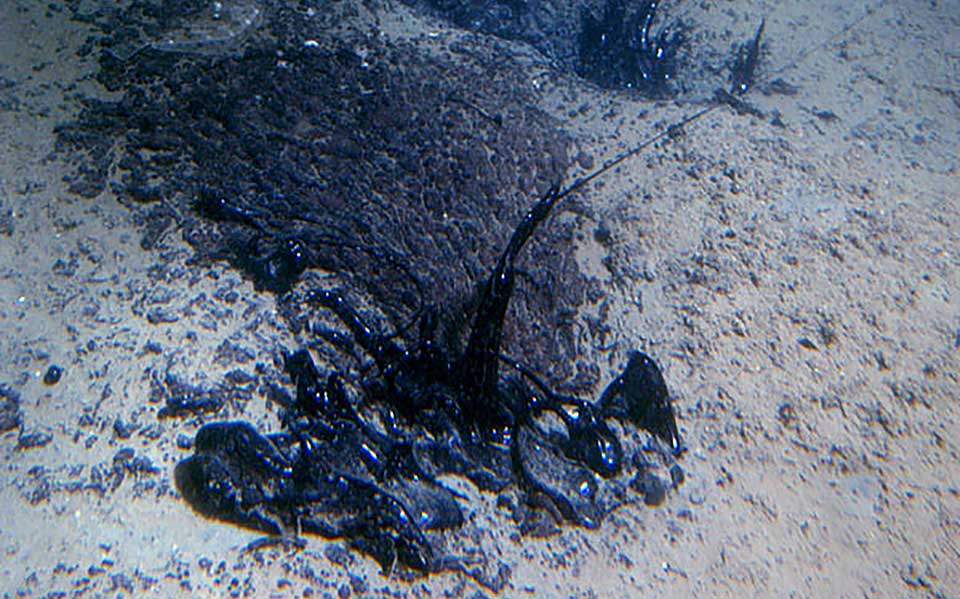What is an oil seep?
An oil seep is a natural leak of crude oil and gas that migrates up through the seafloor and ocean depths.

A natural tar seep offshore of Gaviota in Santa Barbara County, California. Credit: Donna Schroeder/U.S. Geological Survey
Did you know that naturally occurring oil seeps from the seafloor are the largest source of oil entering the world ocean? In fact, they account for nearly half of the oil released into the ocean environment every year.
Seeps occur when crude oil leaks from fractures in the seafloor or rises up through seafloor sediments, in much the same way that a freshwater spring brings water to the surface. NOAA's Office of Response and Restoration (OR&R) is interested in oil seeps because they are predictable places to observe oil behavior. In Santa Barbara, California, where many natural seeps are found, OR&R trains aerial observers, calibrates trajectory models, and performs other tasks to determine how weather, wind, tides, and currents affect oil movement.
When an oil spill occurs in an area with many naturally occurring seeps, responders may have a hard time telling the difference between spilled oil and seep oil. The difference is important because the environmental impacts of oil are determined not only by the amount of oil released into the environment, but also by the type of oil and the speed at which it will disperse. Natural seeps release oil slowly over time, allowing ecosystems to adapt, whereas oil spills from human activities like commercial oil transport can quickly release oil in quantities that overwhelm an ecosystem.
Nonetheless, all oil seeps impact the marine environment. Oil can be toxic to sea life like fish, sea stars, shrimp, and seabirds, with their impacts largely concentrated in the immediate area around a seep.
OR&R tracks naturally occurring oil seeps, helps distinguish oil seeps from production-platform leaks and other spills, and works with partners like the U.S. Coast Guard and the U.S. Fish and Wildlife Service to enhance techniques like oil fingerprinting to determine where oil originates.
Get Social
Did you know?
The waters off of Southern California are home to hundreds of naturally occurring oil and natural gas seeps. These seeps, which probably have been leaking for thousands of years, contribute about five million gallons of oil to the ocean annually. Slicks from larger seeps are visible by satellite, and have been known to travel as far as 100 miles down the coast. Some are even persistent enough to become features on nautical charts!

More Information
Last updated: 06/16/24
Author: NOAA
How to cite this article